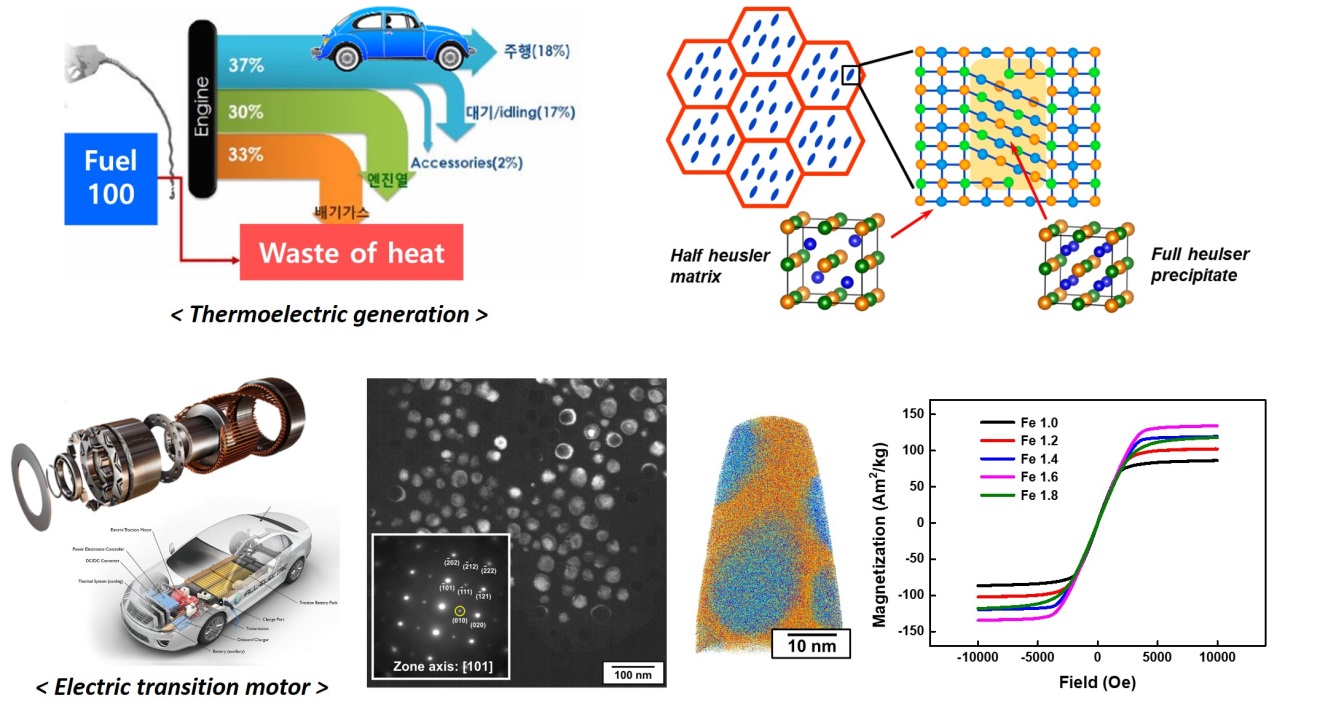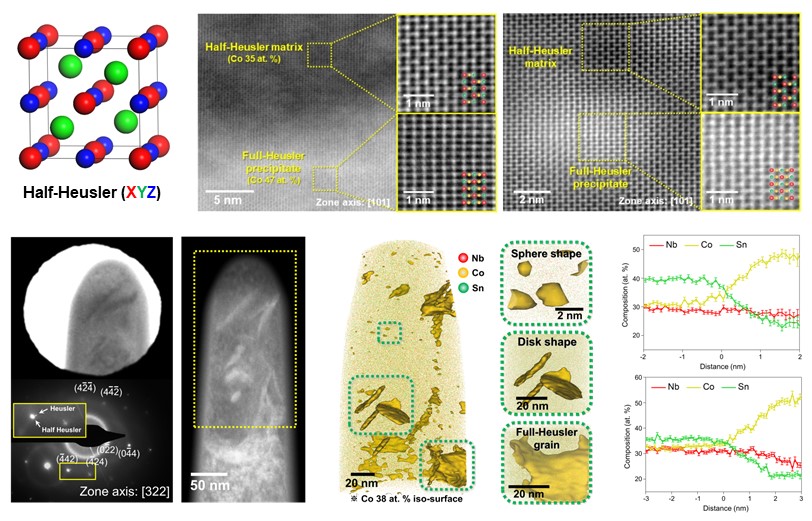Functional Alloys
Functional
alloys

Functional materials exhibit particular physical properties and functions (for example, ferroelectricity, piezoelectricity, magnetism, thermoelectric effect), which can be exploited for various applications.
In our group, we are particularly interested in thermoelectric materials. Thermoelectric materials enable conversion of thermal energy (in particular industrial and automotive waste heat) into electrical energy and are therefore considered to be environmentally friendly. The aim of our research is to understand the structure-property relationships of these important energy materials and to enhance their thermoelectric properties through tailoring their nanostructures.
Half-Heusler compounds
Compounds showing the half-Heusler structure are advantageous in terms of their high thermal stability, mechanical robustness, and high Seebeck coefficients. However, these beneficial properties are compromised by a relatively large lattice thermal conductivity, limiting the thermoelectric energy conversion efficiency.
To overcome this limit, we used a novel bottom-up approach for fabricating nanostructured Heusler compounds, which is based on crystallizing an amorphous precursor. The initial amorphous material is prepared in the form of ribbons by melt-spinning. No homogenization treatment is required, thus saving a substantial amount of time and energy. Subsequently, a short low-temperature heat treatment is applied to induce nanocrystallization. Through a careful selection of the crystallization temperature and time a nanostructure comprising a half-Heusler matrix and full-Heusler nano-precipitates is obtained. Such a nanostructure results in significant improvements of thermoelectric properties.
To overcome this limit, we used a novel bottom-up approach for fabricating nanostructured Heusler compounds, which is based on crystallizing an amorphous precursor. The initial amorphous material is prepared in the form of ribbons by melt-spinning. No homogenization treatment is required, thus saving a substantial amount of time and energy. Subsequently, a short low-temperature heat treatment is applied to induce nanocrystallization. Through a careful selection of the crystallization temperature and time a nanostructure comprising a half-Heusler matrix and full-Heusler nano-precipitates is obtained. Such a nanostructure results in significant improvements of thermoelectric properties.

(C. Jung, B. Dutta, P. Dey, S. Jeon, S. Han, H.M. Lee, J.S.
Park, S.H. Yi, P. Choi, Nano Energy 80 (2021))
